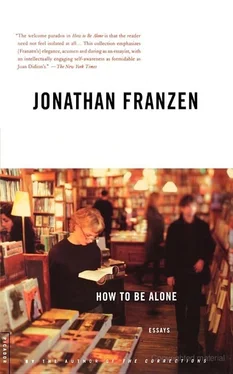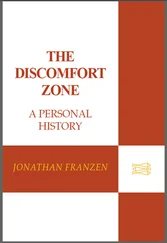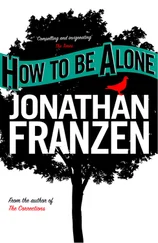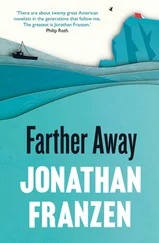“Most people say we’re overpaid and do nothing,” one of them says.
“We couldn’t get a job in Chicago,” the second, a woman in her late forties, says. “We being with the Chicago post office? And looking for a job? I guess I could be a waitress somewhere. But they’d watch me very carefully.”
“It’s like testing positive for HIV,” the third tells me.
GAYLE CAMPBELL, THE PERSON who played the central role in the fall of the Chicago post office, is a captive of both the postal world and her own perfectionism. She is a lanky, handsome woman with large eyes, a communicative brow, and thick auburn hair that she wears pinned up or in a pageboy. She has an obvious intelligence, an intensity of gesture and feeling, that can inspire devotion. The customers she has helped all characterize her as a ministering angel. Robert Pope, an interior designer, tells me, “I have not spoken to one straight shooter in the post office, except Gayle Campbell. She’s a rare individual, a shining light.” Other admirers of Campbell, while no less enthusiastic, admit to being unsettled by the extremity of her dedication to the Postal Service. She has turned a processing plant upside down looking for some misdirected airline tickets. She has taken packages home to her apartment, in the Uptown district, and has got out of bed to deliver them to a customer in her lobby. She routinely spends seventy hours a week on the job, while getting paid for forty. There’s little boundary between her work and her identity. She calls herself a “mail freak.” Her husband is a letter carrier.
Although Campbell’s history is exceptional in its details, it fits the model of the career postal worker who, as an outsider in the larger world, finds a mission in service and a home in regimental authority. Campbell was born in Canada in 1950 and grew up in Edmonton and Moose Jaw. Culturally, she still considers herself Canadian, and she describes her ancestry as African, Irish, and Native American. In 1962, her family moved to Harvey, a small town south of Chicago, and Campbell, an excellent student, finished high school there before her sixteenth birthday. She immediately enlisted in the Army and served in Vietnam for two years. When she was home on leave, she took the civil-service exam and scored 99.6 out of a possible 100. Immediately upon her discharge from the Army, she reported to the postmaster in Harvey. “I was a child bride of the Postal Service,” she says. “It’s all I know.”
Campbell worked as a letter carrier for fifteen years. In 1987 she was promoted into mail processing and began to rise rapidly. By 1991 she was a general supervisor of automation and mechanization in Chicago, with two hundred employees and thirteen supervisors working beneath her. Over the next year and a half she was shifted throughout the processing system as a troubleshooter, trainer, and auditor. In the fall of 1992, however, a reorganization of the postal bureaucracy eliminated several intermediate civil-service grades in mail processing; this appeared to preclude her further advancement. She decided to seek a slight demotion and move into delivery; her plan was to get training there, sit in an intermediate-level job for a year, and then try to jump back into processing at a high level. In January 1993 she became a delivery supervisor at the Hyde Park station, on Chicago’s South Side.
That same winter, corporate customers of the Postal Service, including a consortium of regional banks known as the Chicago Clearing House, were lodging bitter complaints about their service. For fear of scaring customers away, the group never publicized the complaints, but they were in a state of acute distress about, among other things, the lockboxes, located in the Central Post Office, in which they received large checks from institutional and corporate investors. The Postal Service was officially committed to delivering ninety percent of lockbox mail in standard time. (For mail sent and delivered within the Chicago area, the standard is one day, i.e., overnight. For mail sent from Seattle, the standard for Chicago delivery is three days.) By the winter of 1993, the percentage of on-time delivery to the lockboxes was in the low sixties.
Facing heat on many fronts, Ormer Rogers, the Postal Service’s Great Lakes Area manager, set up an eight-member Service Improvement Team to identify breakdowns in the processing and distribution system and work aggressively to repair them. Some of Rogers’s appointments were political; others reflected professional accomplishment. The latter group included Gayle Campbell, who became the de facto leader of the team.
There was no end to the trouble she uncovered. She found carriers walking their routes with makeshift plastic tubs strapped to their carts because no one had requisitioned satchels for them. She found carriers putting undelivered mail in corner mailboxes to be collected and reprocessed. She overheard a station supervisor shouting at a customer whose post-office-box lock had been broken, “Get the fuck out of here!” She found carriers who sat in their trucks on cold days from noon to 7:30 p.m. and then returned to the station, with all their mail, to collect four hours of overtime. She went to the airmail facility at O’Hare Airport and found that jets were being allowed to depart without their contractually specified complement of mail. She went to the NBC Tower, downtown, and found that mail was delivered in sacks that were left out where anyone could open them. She dropped test letters randomly in corner mailboxes throughout the city and kept track of when they were picked up and canceled. Some of the letters ended up at a dead-letter office in Minneapolis.
Such findings, and the reports they generated, hardly endeared the Service Improvement Team to Chicago station managers. In October of 1993, Postmaster Jimmie Mason met with the team and urged it to tone down its reports. Instead of putting its criticisms in writing, he said, the team should endeavor to cooperate with the station managers; as outsiders, the team members didn’t understand the pressures that a station manager had to contend with.
To Campbell, this sounded like a plea for business as usual. Her life was so bound up in the post office that she considered it an extension of herself. A “dirty” post office offended her like a dirty bathroom. Instead of toning down her reports, she made them even harsher. On November 15 and 16, during a follow-up visit to the Graceland Annex, a north-lakefront station, she listed the number of linear feet of mail that were “curtailed,” or left behind, when carriers set out on their routes. Case No. 5706 had seventy-seven feet of curtailment. Other troubled cases had eighty-five, a hundred, and ninety-three feet. Under Case No. 5709 the team discovered two large sacks of collected but unprocessed mail with week-old postage meter dates. On November 17, at the Lakeview station, Campbell found mail that had been held for vacations in July still awaiting delivery. At Case No. 1342 she found Priority Mail dating from October and an Internal Revenue Service communication from September. At Case No. 1346 she turned up General Mills cereal samples from June.
Throughout 1993, Campbell had assured irate customers that Jimmie Mason was serious about cleaning up Chicago. Tenaciously optimistic, she still believed she would get a promotion for her long workdays and for the improvements her team had produced. But either she was wrong about Mason from the start or Chicago had changed him. In late November, according to Campbell, he promised a gathering of the city’s station managers that the Service Improvement Team would be gone by year’s end, and that they need not worry about further harassment.
That same week, however, a man named Jerry Stevens went to the Graceland station to inquire about his business mail, which had failed to materialize for four straight days. Venturing briefly into a work area, he saw a mountain of curtailment. Ninety minutes after phoning a postal-complaint line, he got a call from Graceland’s station manager, who apologized for his poor service and then threatened him with arrest if he ever entered the work area again. Stevens immediately called the Chicago Sun-Times , and their reporter Charles Nicodemus made the anecdote the nucleus of a blistering account of North Side postal complaints.
Читать дальше
Конец ознакомительного отрывка
Купить книгу












